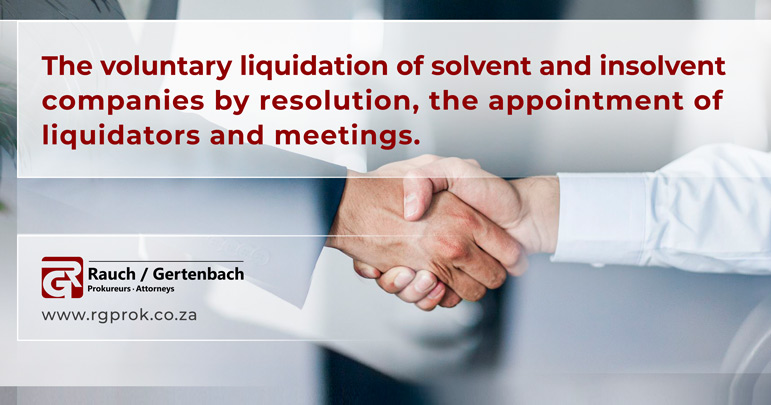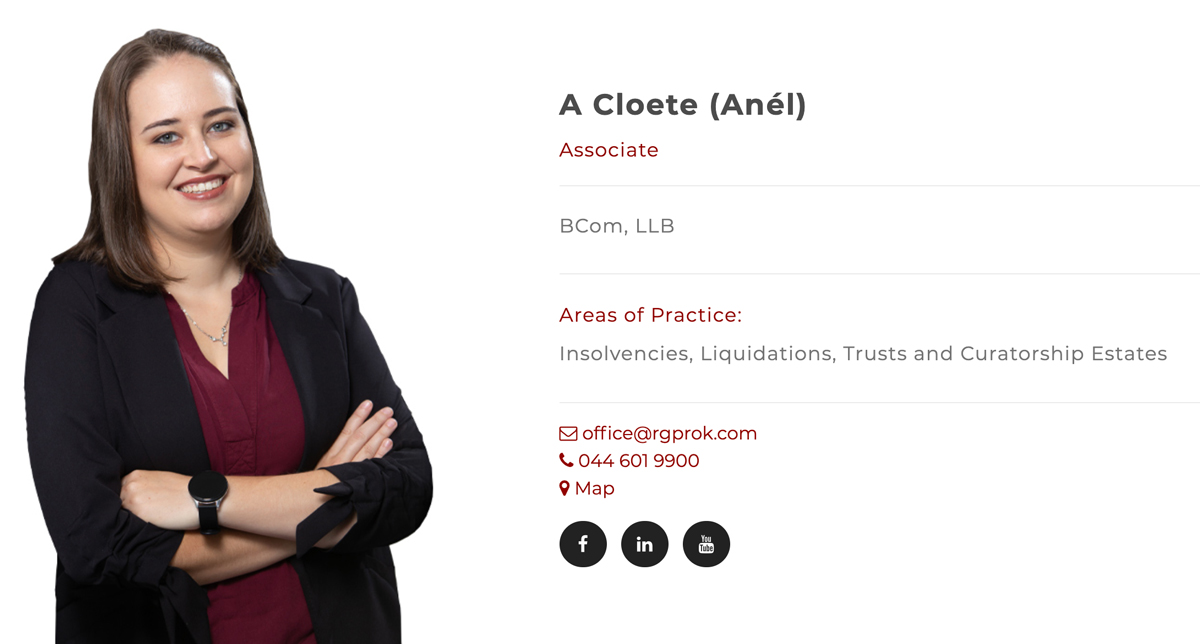The voluntary liquidation of solvent and insolvent companies by resolution, the appointment of liquidators and meetings.
The voluntary liquidation of solvent companies and close corporations by resolution is provided for in section 80 of the Companies Act 71 of 2008. A solvent company can be liquidated by filing a special resolution signed by the member(s) or shareholder(s) with the Companies and Intellectual Property Commission (CIPC). A solvent company is normally liquidated when it has fulfilled its purpose and/or will not operate in the foreseeable future.
A liquidator for a solvent company or CC is nominated by the shareholder(s) or member(s) when the special resolution is filed. Upon appointment, the liquidator will proceed to realise the assets, if any, of the company or CC and will draft the Liquidation and Distribution Account (L&D) after the proceeds of the sale of the assets have been received. The dividend available, after the costs of administration have been deducted, will be paid to the member(s) or shareholder(s) as soon as the L&D account is confirmed by the Master.
Section 351 of the Companies Act, 1973, on the other hand, makes provision for the voluntary liquidation of an insolvent company by filing a special resolution by creditors with CIPC. A resolution by creditors is still signed by the shareholder(s) or the member(s) but is filed because the company is factually or commercially insolvent.
In the instance where an insolvent company is liquidated by special resolution, the creditors nominate a liquidator to be appointed by the Master of the High Court in terms of their policy.
When a company is liquidated, the liquidators are provisionally appointed by the Master and the Master is responsible for convening the first meeting of creditors. In the case of a close corporation the liquidators are initially appointed as final liquidators and convene the first meeting. At the first meeting Creditors are entitled to vote, after proving a claim against the estate, for their chosen liquidator.
The final liquidators are responsible for convening the second meeting and for preparing a report which must be provided to all creditors. The report deals with the assets and liabilities of the estate, whether a danger of contribution exists and how the estate will be finalised after the resolutions have been adopted by the creditors who successfully prove claims.
The liquidators must convene a special meeting for the proving of claims if late claims are received within three months after the second meeting was closed. Creditors who wish to have claims proved after the aforementioned period should obtain the Master’s permission for a further special meeting to be convened.
In the case of a CC resolutions can be adopted at the first meeting already if claims are proved, which will enable the liquidators to immediately start dealing with the assets.
If a company or CC is deregistered without being liquidated, the member(s) or director(s) become personally liable for the liabilities of that company or CC.
Article by: Anél Cloete BCom, LLB.
For more information, kindly contact us at acloete@rgprok.com or 044 601 9900. www.rgprok.com








